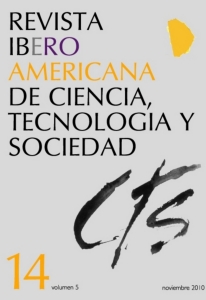Heidegger
The Organic and the Artificial in the Experience of the World
DOI:
https://doi.org/10.52712/issn.1850-0013-838Keywords:
organ, equipment, world, HeideggerAbstract
This paper approaches the organ-equipment comparison developed by Martin Heidegger in its Course of Fribourg, Die Grundbegriffe der Metaphysik (1929/30), to distinguish the main features that make up the ontological structure of both entities -such as serviceability, capacity and impulse versus usefulness, disposition and design- according to its functionality in human life. Thus, this paper seeks to understand the conditions of possibility of human praxis in relation to the organic and artificial. This interpretation takes into account the semantic factors articulated in terms of world’s experience.
Downloads
References
AGAMBEN, G. (2005): Lo abierto. El hombre y el animal, Valencia, Pre-textos.
BASSO MONTEVERDE, L. y BARRIO, C. (2009): “Naturaleza, producción y función técnica. Origen y composición de la Umwelt heideggeriana”, Argumentos de razón técnica, revista española de ciencia, tecnología y sociedad, y filosofía de la
tecnología, nº 12, pp. 59-77.
CATOGGIO, L. y PARENTE, D. (2008) : “Angustia y aburrimiento. Reflexiones sobre un desplazamiento temático en el primer Heidegger”, Ergo. Revista de Filosofía, n°22-23, pp. 7-24.
GEHLEN, A. (1980): El hombre: su naturaleza y su lugar en el mundo, Salamanca, Sígueme.
GEHLEN, A. (1993): Antropología filosófica: Del encuentro y descubrimiento del hombre por sí mismo, Barcelona, Paidós.
HEIDEGGER, M. (1993): Ciencia y Técnica, Santiago de Chile, Universitaria.
HEIDEGGER, M. (1994a): Serenidad, Barcelona, Serbal.
HEIDEGGER, M. (1994b): Conferencias y Artículos, España, Serbal.
HEIDEGGER, M. (1996): “Lenguaje de tradición y lenguaje técnico”, Artefacto. Pensamientos sobre la técnica, nº 1, pp. 10-20.
HEIDEGGER, M. (1997): Ser y Tiempo, Chile, Universitaria.
HEIDEGGER, M. (2000): Ontología. Hermenéutica de la Facticidad, Madrid, Alianza.
HEIDEGGER, M. (2002): Interpretaciones fenomenológicas sobre Aristóteles. Indicación de la situación hermenéutica, Madrid, Trotta.
HEIDEGGER, M. (2007): Conceptos Fundamentales de la Metafísica. Mundo-Finitud-Soledad, Madrid, Alianza.
IHDE, D. (1974): “The experience of technology: human-machine relations”, Cultural Hermeneutics, Vol. 2, pp. 267-279.
IHDE, D. (2005): “La incorporación de lo material: fenomenología y filosofía de la tecnología”, Revista Iberoamericana de Ciencia, Tecnología y Sociedad -CTS, vol. 2, n° 5, pp. 153-166.
MALIANDI, R. (1984): Cultura y conflicto. Investigaciones éticas y antropológicas, Buenos Aires, Biblos.
LAFONT, C. (1993): La razón como lenguaje. Una revisión del ‘giro lingüístico’ en la filosofía del lenguaje alemana, Madrid, Visión
LAFONT, C. (1997): Lenguaje y apertura del mundo. El giro lingüístico de la
hermenéutica de Heidegger, Madrid, Alianza.
LAWLER, D. y VEGA, J. (2005): “La experiencia del mundo técnico”, Revista Iberoamericana de Ciencia, Tecnología y Sociedad -CTS, vol. 2, n° 5, pp. 67-80.
PARENTE, D. (2007): Encrucijadas de la técnica: ensayos sobre tecnología,
sociedad y valores, La Plata, EDULP.
PARENTE, D. (2008): “La concepción heideggeriana del artefacto en Grundbegriffe der Metaphysik”, Signos Filosóficos, vol. 10, n° 20, pp. 75-94.
VON UEXKÜLL, J. (1934): Ideas para una concepción biológica del mundo, Madrid, Espasa Calpe.
Downloads
Published
How to Cite
Issue
Section
License
Copyright (c) 2025 CC Attribution 4.0

This work is licensed under a Creative Commons Attribution 4.0 International License.
All CTS's issues and academic articles are under a CC-BY license.
Since 2007, CTS has provided open and free access to all its contents, including the complete archive of its quarterly edition and the different products presented in its electronic platform. This decision is based on the belief that offering free access to published materials helps to build a greater and better exchange of knowledge.
In turn, for the quarterly edition, CTS allows institutional and thematic repositories, as well as personal web pages, to self-archive articles in their post-print or editorial version, immediately after the publication of the final version of each issue and under the condition that a link to the original source will be incorporated into the self-archive.











